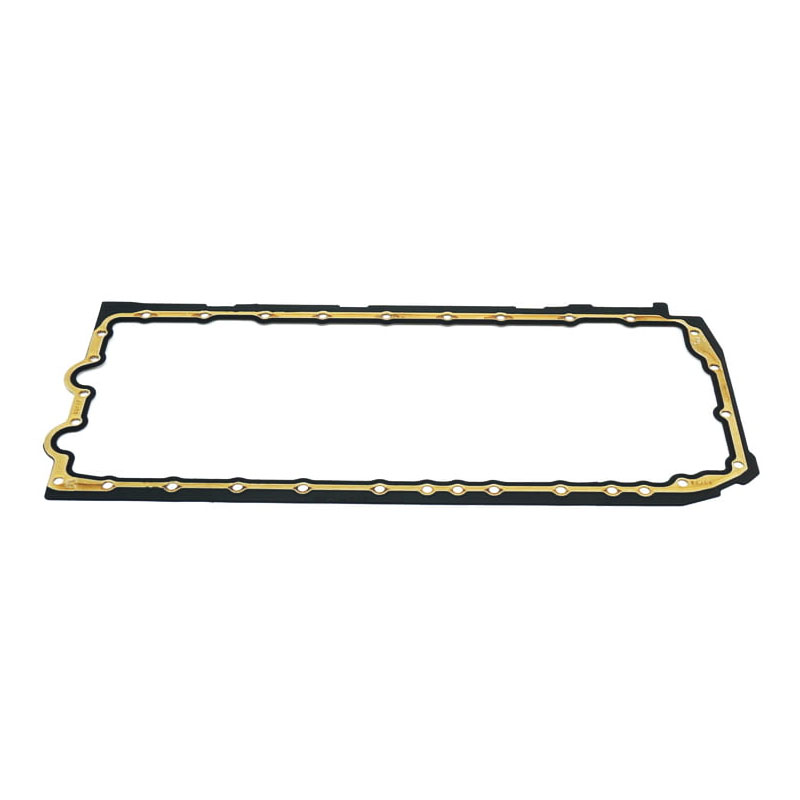Choosing the Right Engine Pan Gasket for Optimal Vehicle Performance
Understanding the Importance of the Engine Pan Gasket
The engine pan gasket, also known as the oil pan gasket, is a crucial component that plays a significant role in the proper functioning of an internal combustion engine. Situated at the junction between the oil pan (which collects and holds the engine oil) and the engine block, the gasket serves to seal the oil pan to the engine, preventing leaks of engine oil.
Function of the Engine Pan Gasket
The primary function of the engine pan gasket is to provide a tight seal that prevents oil from leaking out of the engine. Engine oil is vital for lubricating the moving parts of the engine, reducing friction, and maintaining optimal engine temperatures. Without sufficient oil, an engine can suffer severe damage, leading to costly repairs or even complete engine failure.
In addition to preventing oil leaks, the engine pan gasket also serves to protect the engine from contaminants. It acts as a barrier that keeps dirt, debris, and other foreign particles from entering the oil pan and mixing with the engine oil, which can degrade its quality and reduce its effectiveness as a lubricant.
Common Issues with Engine Pan Gaskets
Despite their importance, engine pan gaskets can fail over time due to several factors, including wear and tear, exposure to extreme temperatures, and improper installation. A failed gasket can lead to a range of problems, the most common of which is oil leakage. Symptoms of a failing engine pan gasket may include oil spots under the vehicle, a drop in oil levels, or an illuminated oil pressure warning light on the dashboard.
When the gasket fails, it can also lead to oil contamination. If dirt or debris enters the engine oil through a damaged gasket, it can cause significant wear on metal engine components. This not only increases the risk of engine damage but can also reduce the overall performance and efficiency of the vehicle.
engine pan gasket

Replacement and Maintenance
Replacing a worn or damaged engine pan gasket is a task that should be performed by a qualified mechanic. The process involves draining the engine oil, removing the oil pan, cleaning the surfaces, and installing a new gasket. It’s crucial to use high-quality gaskets, as inferior products may result in recurring leaks.
Regular maintenance of the engine oil and timely replacement of the oil filter can help prolong the life of the engine pan gasket. It is recommended to check the engine oil regularly for any signs of contamination or leaks and to adhere to the manufacturer’s guidelines for oil change intervals.
Selecting the Right Gasket Material
When it comes to engine pan gaskets, choosing the right material is essential. While some gaskets are made from rubber or cork, others may use silicone or metal with a rubber coating. The choice of material often depends on the engine type and operating conditions. For instance, high-performance engines may benefit from gaskets made from advanced materials that can withstand higher temperatures and pressures.
Conclusion
The engine pan gasket plays a vital role in the longevity and efficiency of an engine. By ensuring a secure seal, it prevents oil leaks and contamination, which are essential for maintaining engine health. Given its importance, regular inspections and timely replacements when necessary are critical to avoid more severe engine problems down the line.
In summary, understanding the function and significance of the engine pan gasket can help vehicle owners appreciate the importance of regular vehicle maintenance. By ensuring that this relatively small component is in good condition, car owners can enjoy a smoother and more reliable driving experience, with the peace of mind that comes from knowing their engine is well-protected. Taking the time to care for your engine pan gasket is an investment in the long-term health of your vehicle.
-
The Ultimate Guide to Boat Propeller Bearings and Trailer Wheel Bearings
News Jul.31,2025
-
The Essential Guide to Marine Bearings and Boat Trailer Wheel Bearings
News Jul.31,2025
-
The Complete Guide to Heavy Duty Seals: Protecting Doors and Spaces Efficiently
News Jul.31,2025
-
Essential Guide to Marine Shaft Bearings and Boat Trailer Axle Bearings
News Jul.31,2025
-
Comprehensive Guide to Marine and Trailer Bearings for Safe Boating and Transport
News Jul.31,2025
-
Comprehensive Guide to Automotive Oil Seals: Protecting Your Engine and Shafts
News Jul.31,2025
-
Understanding Automotive Oil Seals: Essential Components for Engine and Shaft Protection
News Jul.30,2025
Products categories















